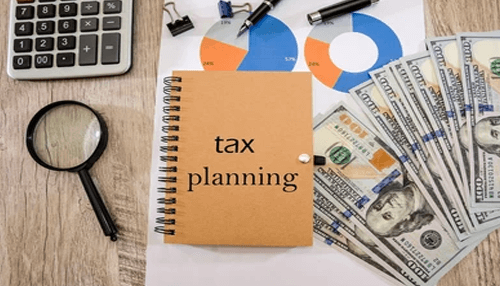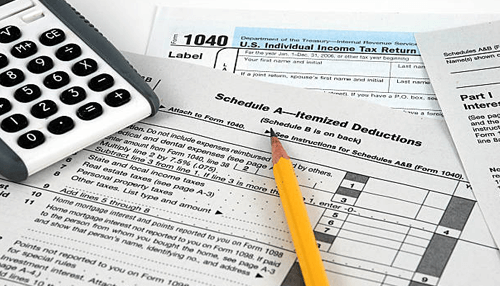Tax planning has never been easier with the advancement of accounting software and ample opportunities to utilize outsourced accounting services to your benefit. However, before relying entirely on outside sources, you should also familiarize with the basic structure of how to plan for your taxes.
Having a foundational knowledge of what goes into tax planning will better prepare you for any questions you have about outsourced accounting firms and the strategy you want to implement for your business. Continue reading to learn more about how you should approach tax season to maximize your tax planning experience.
Understand Your Tax Bracket
You can’t plan for your tax season if you aren’t aware of your tax bracket. Understanding your tax bracket sets the foundation for the rest of your planning such as choosing which deductions to incorporate and how to safeguard your income taxes.
The US has a progressive tax system, meaning people with higher reported incomes have to pay more taxes. There are seven federal tax brackets: 10%, 12%, 22%, 24%, 32%, 35%, and 37%. No matter what tax bracket you fall in, you likely won’t have to pay your tax rate on your income. The reasons for this are as follows:
- Tax deductions determine your taxable income. Hence, why your taxable income isn’t the same as your overall salary.
- The government divides your taxable income into chunks and taxes each chunk at the corresponding rate.
For example, you file as a single and you have $30,000 in taxable income. Does that mean you have to pay 12% on your entire $30,000? No. You only pay 10% on the first $9,875. Then you pay 12% on the remaining income. If you make above $40,525, but beneath $86,375, you would pay 10% on the $9,875, 12% on the income between $9,875 and $40,525, and 22% on the remaining income. This process continues all the way up the brackets.
Understand the Difference Between Tax Deductions and Tax Credits
Tax deductions and tax credits operate differently than one another. Both can reduce your tax bill but in different ways. Understanding the difference between these two strategies helps you devise a comprehensive tax strategy.
- Tax deductions- Specific expenses you incur from working that you can subtract from your taxable income. For example, if you drive for your job, you can deduct gas mileage from your taxable income.
- Tax credits- Tax credits are more beneficial than tax deductions because they give you a dollar-for-dollar reduction on your overall tax bill. For example, if you qualify for a tax credit of $2,000, your bill will be lowered by the corresponding amount.
Standard Deductions Vs. Itemized
Determining whether you want an itemized or standardized deduction will have significant consequences on your tax planning and overall tax bill. Standardized deductions give you a flat-rate deduction for your taxes. Using this method, you don’t have to plan your deduction as thoroughly and it makes more sense if you don’t have as many deductible expenses. Congress typically sets the standard deduction number every year.
Itemized deductions are the opposite of the standard deduction and they offer the benefit of being able to receive more tax deductions if you have an extensive list of deductions. Simply put, people itemize their deductions if they add up to more than the standard deductions. However, this process takes longer than the simple process of opting for the standard deduction.
Some tax strategies make itemized deductions the more attractive options. For example, if you own a home, you can itemize deductions for mortgage interest and property taxes may add up to more than the standard deduction. You might also be able to itemize your state tax return even if you take the standardized federal return.
What Records Should You Keep?
Most of remaining compliant with tax codes comes down to keeping thorough tax returns and understanding the most convenient tools used to complete them. The IRS typically has three years to decide whether they want to audit your return, so you should always keep your records for at least three years. If you file a claim for a credit or refund after you filed your original return, you should also keep records.
In some cases, you should keep records for longer than three years if the following circumstances apply to your situation:
- Six years: If you underreported your income by more than 25%
- Seven years: If you wrote off the loss from a worthless security.
- Indefinitely: The IRS can audit you if you committed tax fraud or didn’t file a tax return.
Shelter Your Income
Deductions and credits cut your tax bill, but there are other tax strategies that can help you protect your money from the IRS. Three popular methods to protect your income involve tweaking your W-4, investing in a 401K, and putting money in an IRA.
Deductions and credits are a great way to cut your tax bill, but there are other tax planning strategies that can help keep the IRS’ hands off your money. Here are some popular tax planning strategies.
The more allowances you claim on your W-4, the less money gets taken out of your pay for taxes. Thus, claiming fewer allowances on your W-4 should result in more payment appearing on your check and more tax deduction upfront.
Many employers offer 401K savings and investing plans to give you tax breaks on money you set aside for retirement. The IRS doesn’t tax what you divert from your paycheck into a 401 k. In 2020 and 2021, you can invest as much as $19,500 per year into a 401k to protect it from taxation.
IRAs consist of traditional IRAs and Roth IRAs. You have until the tax deadline to fund your IRA for the previous tax year, giving you extra time to plan for your taxes and take advantage of an IRA. Tax advantages for traditional IRAs include your contributions being tax-deductible. The amount you can deduct depends on whether your spouse is covered by a retirement plan at work and how much you make.
The advantage to a Roth IRA is that your withdrawals in retirement are not taxed at all. You pay your taxes up front. However, your contributions are not deductible.
Conclusion- The Complete Guide to Tax Planning Season
As you can see, there are many options at your disposal when planning for your tax season. The most foundational aspect of tax planning deals with understanding your tax bracket and the various deductions and breaks you qualify for.
You should also incorporate a strategy that uses a retirement account to increase your deductions. Which of these measures you choose to incorporate comes down to your specific needs and desires and you should spend time considering a comprehensive tax plan with your accountant.



